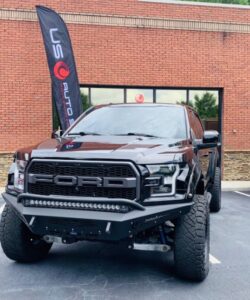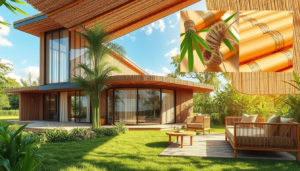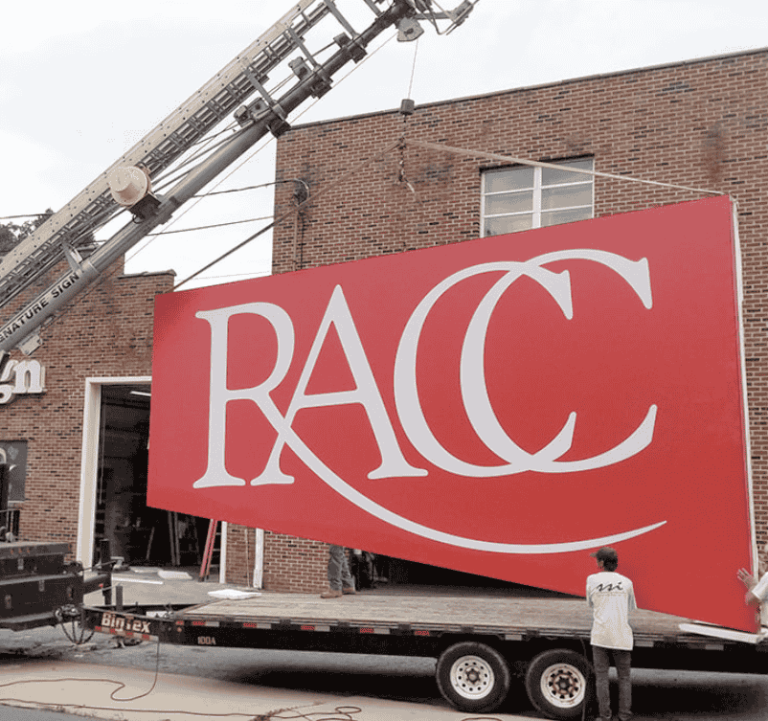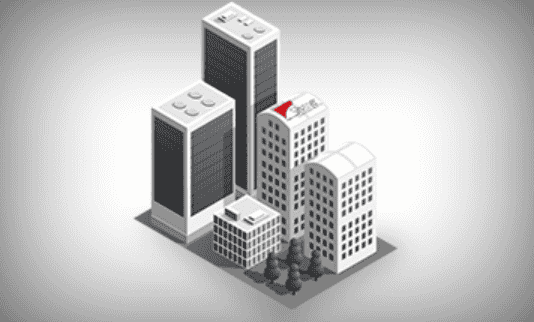The construction industry is focusing more on sustainable materials. Laminated bamboo lumber (LBL) is a significant improvement, using rapid-renew bamboo. It’s a strong and adaptable material, ready to face off against old favorites like wood and steel. LBL blends environmental care with cutting-edge construction, aiming for a smaller carbon footprint and stronger durability for all sorts of projects.
Rizome is at the forefront of eco-friendly construction with their wide array of bamboo products. They offer everything from veneer panels to Laminated Strand Lumber (LSL). Their bamboo boasts impressive specs: compression values from 7,000-11,000 psi, Modulus of Elasticity at 2.8 million psi, and Modulus of Rupture at 22,000 psi. These figures highlight bamboo’s edge over traditional options like Douglas fir lumber.
Key Takeaways
Laminated bamboo lumber is a sustainable lumber alternative that combines environmental responsibility with innovative construction solutions.
Rizome offers a wide range of bamboo products, from veneer panels to Laminated Strand Lumber (LSL).
Bamboo products from Rizome exhibit superior technical properties, including high compression values, MOE, and MOR.
Bamboo is highlighted for its sustainability, needing fewer trees for oxygen production compared to traditional wood materials.
Bamboo grows to full height in a single growing season and releases 35% more oxygen than an equivalent number of trees.
Introduction to Laminated Bamboo Lumber
Laminated bamboo lumber (LBL) is an exciting new choice for building. It uses bamboo, which grows back very quickly. LBL turns bamboo into boards that look like regular wood. It highlights bamboo’s best features, like strength and lasting power, to offer a great alternative to traditional materials.
Bamboo grows back much faster than regular trees. While trees take 20-25 years, bamboo needs only 3-5 years. This means we can use bamboo more efficiently and reduce the carbon footprint of building materials. Plus, bamboo gives four times more material per acre than trees, making it super efficient.
Creating LBL also doesn’t waste much, which makes it very eco-friendly. Cities with not enough homes, like Dhaka, Bangladesh, and Sao Paulo, Brazil, see bamboo as a great answer. Dhaka needs homes for 100 million more people by 2050. In Sao Paulo, over three million people live in poor conditions. Bamboo offers a quick, strong building solution.
To understand why LBL is better than traditional wood, look at these facts:
Strength Comparison: Steel is often not as strong as LBL.
Adhesive Efficiency: The right amount of glue makes bamboo even stronger.
Mechanical Properties: LBL can handle a lot of weight and pressure, more so than many other materials.
LBL’s mix of usefulness and environmental kindness makes it key for future buildings. Our work with bamboo leads us towards a more eco-friendly and sturdy future.
Sustainability and Environmental Benefits
Bamboo is a great choice for building because it’s strong and helps the environment. It grows back quickly and takes in carbon dioxide better than most trees. This makes bamboo a top option for green building materials.
Bamboo’s Rapid Renewability
Bamboo grows super fast, up to three feet each day. It’s ready to use in just 3-5 years, unlike hardwoods which take much longer. This means we can use it more often, helping to keep bamboo sustainable. Plus, making things like floors from bamboo is really efficient, which is good for the planet.
Carbon Footprint Reduction
Bamboo helps fight climate change by absorbing more carbon dioxide and giving out more oxygen than trees. Laminated bamboo lumber also creates less waste than traditional wood. And it’s affordable, making it an attractive option for eco-friendly building.
Soil Erosion Prevention
Bamboo’s roots are great at holding soil in place and stopping erosion. This is very helpful in areas where soil easily gets damaged. Using bamboo can help keep the soil healthy and support farming. It’s not just a better choice for lumber; it also helps take care of the soil.
Check out this table that shows why bamboo is better for the environment than regular wood:
| Factors | Bamboo | Traditional Timber |
| Growth Rate | 3-5 years | 20-50 years |
| Carbon Absorption | Higher CO2 absorption | Lower CO2 absorption |
| Soil Erosion Prevention | Strong root system | Moderate root system |
| Waste Generation | Lower waste | Higher waste |
| Cost Competitiveness | High | Varies |
Strength and Durability of Laminated Bamboo Lumber
Laminated bamboo lumber (LBL) is making waves in construction for its strong and lasting qualities. It rivals traditional materials with its excellent performance. Let’s look at why LBL is a top choice for buildings.
Tensile Strength Compared to Steel
LBL’s tensile strength is often compared with steel, showing just how robust it is. Tests on the Dendrocalamus asper bamboo have found it has a tensile strength of 135.53 MPa. Such strength means LBL can handle stretching forces well, perfect for tough construction needs.
Compression Resistance
LBL is also known for resisting compression, making it stand out as a building material. Studies suggest laminated bamboo’s compression strength can be as high as 58.7 MPa. With Bambusa multiplex showing strength of 39.052 MPa in its natural state, LBL stands strong under pressure. This makes it ideal for various parts of a building.
Termite and Fire Resistance
LBL’s resistance to termites is another plus, crucial for any construction material’s lifespan. Some bamboo types naturally keep termites away. When made into LBL, they help create pest-free constructions. Also, LBL is fire resistant. This adds a safety feature for the people using the buildings. These qualities highlight the lasting benefits of choosing LBL for construction projects.
Aesthetic Appeal of Bamboo in Modern Architecture
When we bring architectural bamboo into modern designs, we see its aesthetic perks. Bamboo’s natural look and light shades offer a warm feel. This makes spaces inviting, perfect for modern design. It fits well in different architectural styles, from city lofts to suburban homes.
Architectural bamboo is also very versatile. It can be tailored to fit any design need. Whether you want a rustic or modern look, bamboo can do it all. This flexibility makes it a top choice for any design style.
Bamboo is great for green building because it grows fast and is renewable. It can shoot up to three feet a day and matures in just a few years. Compared to hardwoods, bamboo is quicker and cheaper to grow. This makes it both sustainable and budget-friendly.
The demand for bamboo is increasing because it’s sustainable. Reports say governments are helping boost bamboo use to create eco-friendly buildings. This shows bamboo is not just good for the environment but is also becoming a popular design element.
Bamboo is strong, making it good for areas with earthquakes. It can handle natural disasters well without losing strength. Bamboo is also great for keeping homes warm or cool, saving energy and money.
| Aspect | Bamboo | Traditional Timber |
| Growth Rate | Matures in 3-5 Years | Takes Decades |
| Carbon Sequestration | High | Moderate |
| Cost Effectiveness | More Affordable | Less Affordable |
Resource Renewability |
Highly Renewable |
Slow Renewable |
Aesthetic Versatility |
High | Moderate |
More people now want green buildings, and bamboo’s appeal is growing. It’s attractive and good for the planet. As architectural bamboo grows in popularity, it’s making buildings beautiful and future-friendly.
Cost Efficiency and Long-term Benefits
Laminated bamboo lumber (LBL) is cost-effective and durable. It’s a top choice for modern building works. The first investment might be higher, but the savings over time are big. This is due to less maintenance and its long life.
Initial vs. Long-term Costs
The starting price for LBL is more than cement and steel. But its strong nature means you don’t replace or fix it often. This leads to big savings. Let’s see an example:
| Material | Initial Cost | Maintenance Frequency | Total Cost Over 20 Years |
| LBL | High | Low | Moderate |
| Cement | Moderate | High | High |
| Steel | High | Moderate | High |
Energy Efficiency in Buildings
LBL makes buildings more energy-efficient. It keeps indoor temperatures just right, which lowers heating and cooling costs. This saves money and is good for the planet too.
Right now, construction uses 40% of all energy. Using LBL helps use less energy from start to finish. Bamboo grows fast and absorbs carbon, making it even better for saving costs and the Earth.
Combining Laminated Bamboo Lumber with Other Sustainable Materials
Combining laminated bamboo lumber (LBL) with other sustainable materials boosts their performance and looks. Through sustainable building methods, mixing LBL with options like TFL, sustainable PVC, and reclaimed wood brings many benefits.
Thermally Fused Laminate (TFL)
Pairing thermally fused laminate (TFL) with laminated bamboo lumber makes surfaces both tough and beautiful. TFL is praised for its scratch resistance and easy upkeep. When matched with LBL’s strength, it results in materials that are strong yet lovely. They’re perfect for various uses, from interior touches to furniture making.
Sustainable PVC
Mixing sustainable PVC with laminated bamboo lumber helps a lot, especially outdoors. Sustainable PVC provides a protective coating, increasing bamboo decking’s resistance to weather. By choosing these materials, we show our dedication to building sustainably.
Reclaimed Wood
Adding reclaimed wood to laminated bamboo lumber creates striking textures and looks for modern buildings. This approach supports recycling and emphasizes construction sustainability. Using reclaimed wood diversifies our materials, ensuring our projects are both green and uniquely beautiful.
Practical Applications in Residential Buildings
Laminated bamboo lumber (LBL) is a great choice for modern homes. It’s strong, grows quickly, and looks good. It works well for things like kitchens and outdoor decks. Plus, it’s kind to the planet.
Kitchen and Bathroom Cabinetry
LBL is perfect for places like kitchens and bathrooms. It doesn’t warp in humid conditions, unlike other woods. This means bamboo cabinets are strong and last a long time. They also fit well in eco-friendly homes.
Outdoor Decking and Cladding
Bamboo is strong and handles weather well, making it great for outside. Mixing it with materials like PVC boosts its strength outside. This makes decks and outer wall coverings last longer and look good.
Interior Flooring
Bamboo flooring is becoming popular inside homes. It’s tough enough for areas with a lot of foot traffic. It also adds to a home’s green design. Using bamboo helps reduce the home’s carbon footprint.
Using LBL in homes is smart. It saves money in the long run and adds beauty. Builders and homeowners are choosing bamboo for a greener future.
Innovative Uses in Commercial and Public Spaces
Today’s architecture brings new life to public spaces using commercial bamboo. This material makes communal areas both functional and beautiful. By choosing sustainable materials like bamboo, we’re rethinking how we use shared spaces.
Bamboo is both strong and eco-friendly. Its tensile strength is even stronger than steel. This makes it perfect for areas that need to be sturdy. Also, it’s flexible enough to handle strong winds, making buildings safer.
More and more, we see bamboo in big public projects. Laminated bamboo lumber, or LBL, is especially strong and stable. It’s great for areas with lots of people because it holds up well over time.
Bamboo helps the planet too. It absorbs a lot of CO2 and gives off more oxygen than typical trees. This is key for meeting green building standards like LEED and BREEAM. Using bamboo is a step towards greener buildings.
Bamboo is also easy to use and cuts down on waste. It speeds up building time and is eco-friendly. Bamboo can even replace traditional plywood, making design more sustainable.
Let’s compare engineered bamboo to traditional materials:
| Property | Engineered Bamboo | Traditional Wood |
| Modulus of Elasticity (PSI) | 4 million+ | 2 million |
| Tensile Strength | 10x stronger | Weaker |
| Density | 40% denser | Less dense |
| Oxygen Production | 37% more | Less efficient |
| CO2 Sequestration | 362 tons/hectare/year | Lower capacity |
Using bamboo in public spaces is a big step forward. It makes environments sustainable, strong, and good-looking. By picking materials like bamboo, we’re making our communities more resilient and green.
Laminated Bamboo Lumber in Interior Design Elements
Eco-conscious living has made homeowners and designers turn to laminated bamboo lumber (LBL) for interior design. LBL is sustainable and versatile. It’s perfect for eco-friendly interiors, offering both style and durability.
Flooring Options
Bamboo flooring is beneficial. It renews fast, needing only 3 to 5 years to harvest, unlike hardwoods. It’s light but tough, making floors strong and simple to look after. Bamboo plywood is also more stable than wood, which means less warping or splitting.
Wall Paneling
Bamboo wall paneling adds warmth and beauty. It improves indoor air too, sticking to eco-friendly interior principles. Installing bamboo is easy and less work because it’s light. Its strength and flexibility also make it great for wall paneling.
Furniture Design
Bamboo is great for furniture because of its strength, even more than hardwoods like oak. It’s also light, making moving and putting together furniture easier. With CNC machines, bamboo furniture pieces fit perfectly, for both simple and complex designs.
Bamboo works well with finishes, allowing for stains, oils, and varnishes. Eco-friendly finishes are often used, keeping furniture sustainable. This makes bamboo furniture a blend of modern style and eco-friendly living.
| Property | LBL | Hardwood |
| Harvest Time | 3-5 years | 30-50 years |
| Tensile Strength | Higher than Hardwood | Varies by Species |
| Dimensional Stability | High | Moderate |
| Environmental Impact | Eco-friendly | Moderate to High |
Conclusion
As we wrap up our journey through laminated bamboo lumber, we see why it’s becoming popular in eco-friendly building. Almost 40% of the world’s energy is used by buildings. So, finding green options like laminated bamboo lumber is key. This material is not just strong and flexible for building. It also cuts down on environmental harm.
Laminated bamboo lumber can hold up to three times more weight than regular wood. Its compression strength is impressive, ranging from 34-84 MPa when measured along the grain. These qualities make it perfect for various uses, from home cabinets to commercial flooring. Bamboo grows back quickly and its forests absorb a lot of carbon. This makes laminated bamboo a top choice for sustainable construction.
Choosing bamboo for its eco-friendliness offers more than just strength and good looks. Shipping costs might seem high because of its weight. But, using bamboo that’s local or shipped efficiently can have great environmental benefits. We need to think about these things to make the most of laminated bamboo lumber in our buildings.
In short, adopting laminated bamboo lumber is essential for building a greener future. It reduces our carbon footprint and brings new ideas to construction. By working together, we can move towards a construction industry that cares more about the planet. Let’s be leaders in making construction more sustainable and mindful of the environment.
FAQ
What is Laminated Bamboo Lumber (LBL)?
Laminated Bamboo Lumber (LBL) is made from bamboo, which grows really fast. These bamboo pieces are processed into boards. They are as strong and durable as the wood we usually use.
How does LBL contribute to eco-friendly construction?
LBL is good for the planet because it doesn’t harm the environment much. Bamboo can grow back in just 3-5 years. It doesn’t produce a lot of waste either. This helps keep the soil stable and stops it from washing away.
What are the environmental benefits of using bamboo in construction?
Bamboo helps clean the air quickly because it absorbs a lot of CO2. Its roots keep the soil from eroding. These are big pluses for the environment.
How does the strength of LBL compare to traditional building materials like steel?
LBL is as strong as steel and can be compressed a lot without breaking. It’s perfect for buildings that need to be very sturdy. It’s also good at fighting off bugs and doesn’t catch fire easily.
What aesthetic benefits does bamboo offer in modern architecture?
Bamboo looks great and fits well with modern looks. It can take on lots of styles, from simple to fancy. This makes it a favorite for designers wanting to add a natural touch.
Is LBL cost-effective in the long run?
At first, LBL might cost more. But it doesn’t need to be replaced or fixed often. Its insulation helps save on energy bills, making it cheaper over time.
Can LBL be combined with other sustainable materials?
Yes, LBL works well with other eco-friendly materials. It can be mixed with TFL for more strength, PVC for outdoor use, and reused wood for a unique look. This makes it even more sustainable.
What are some practical applications of LBL in residential buildings?
LBL is great for kitchen and bathroom cabinets because it doesn’t get damaged by water. It’s also good for outdoor decks and cladding. For indoor floors, it’s durable and environmentally friendly.
How can LBL be used innovatively in commercial and public spaces?
Bamboo is both useful and nice to look at. It’s used a lot in places like businesses and parks. It helps these places meet green building standards and makes them nicer for everyone.
How does LBL contribute to interior design?
LBL can be used for many things inside a house. Floors made with LBL are strong and easy to keep clean. Walls and furniture made from bamboo add beauty. They’re also strong, green, and trendy.













+ There are no comments
Add yours